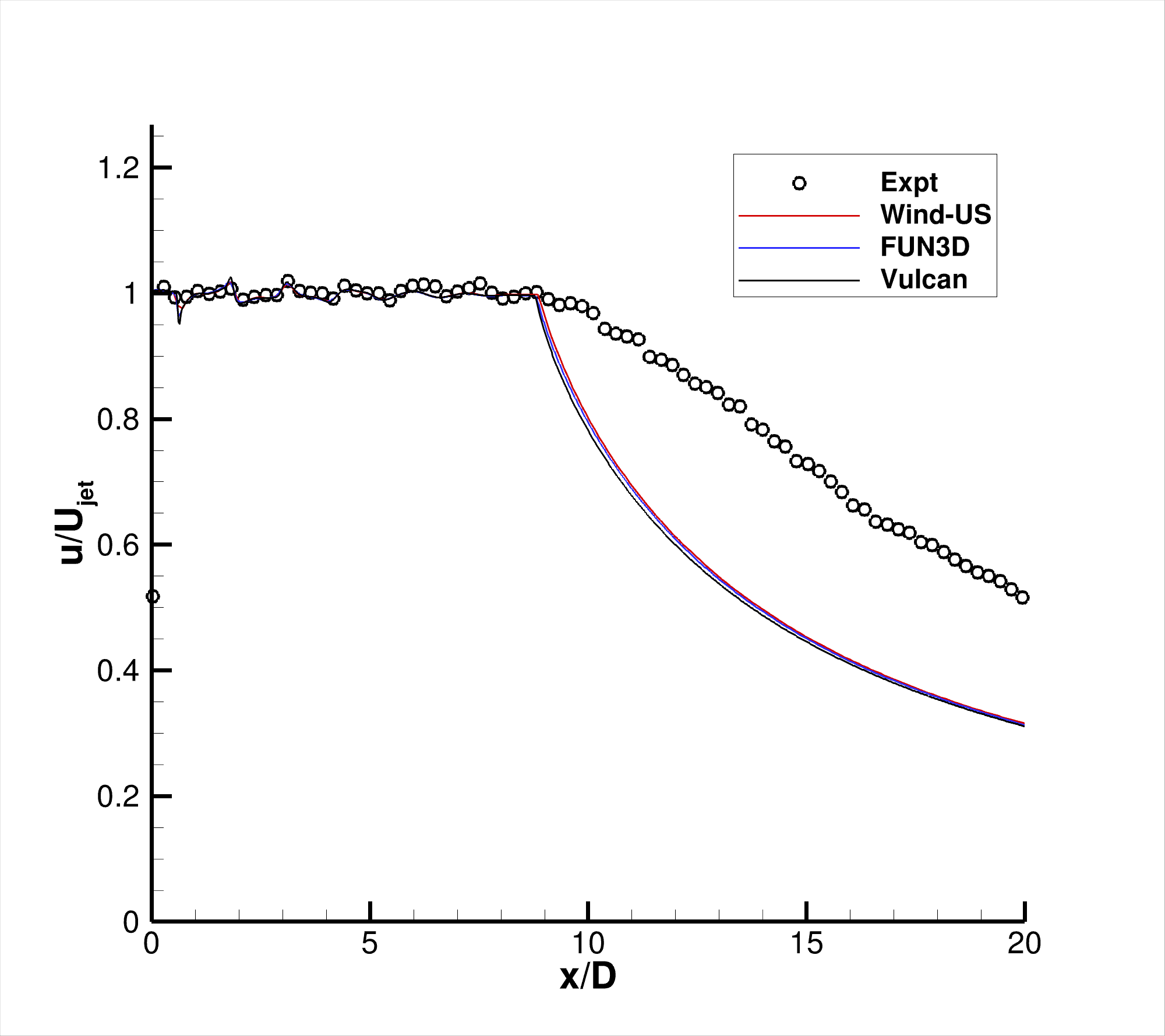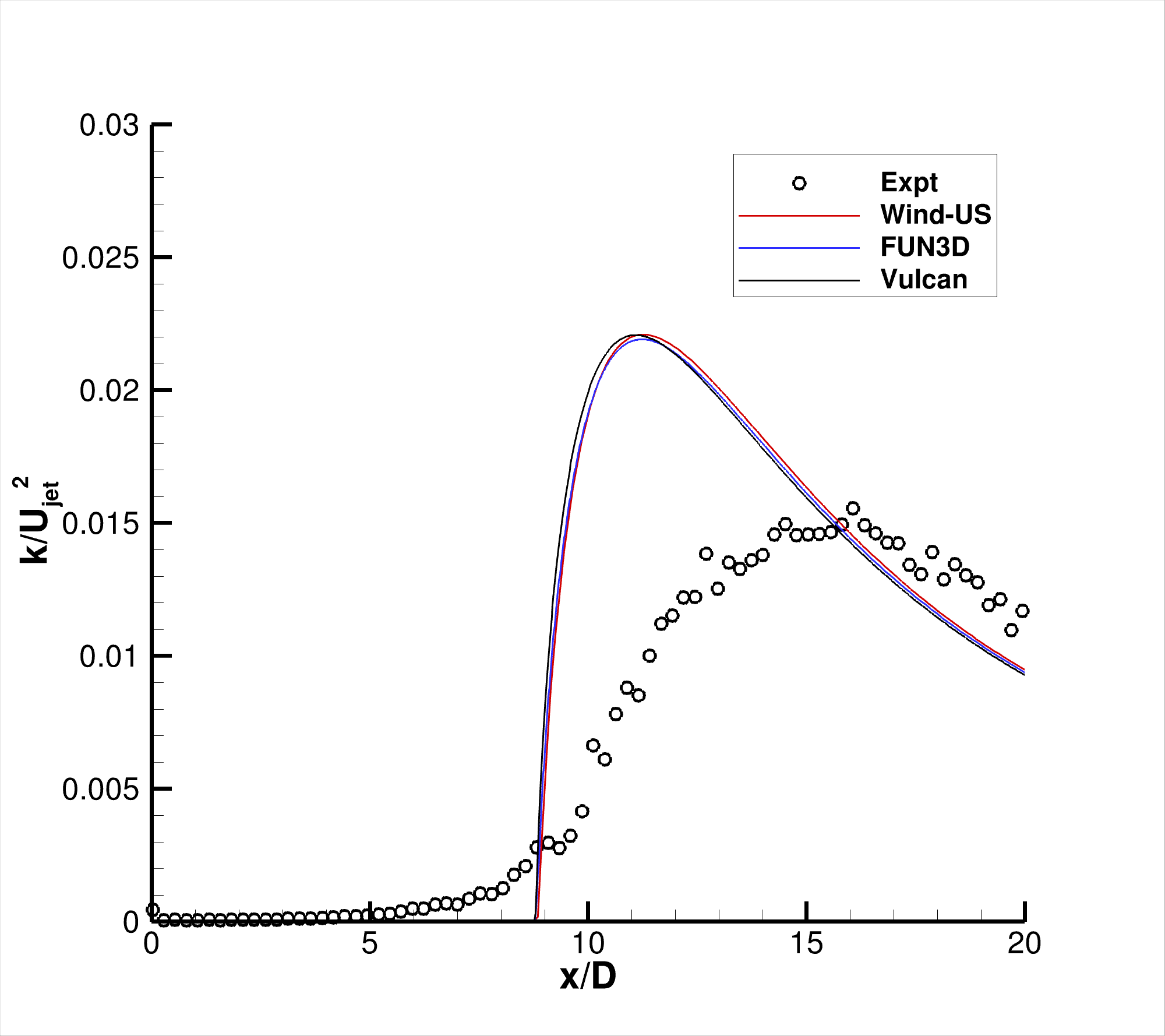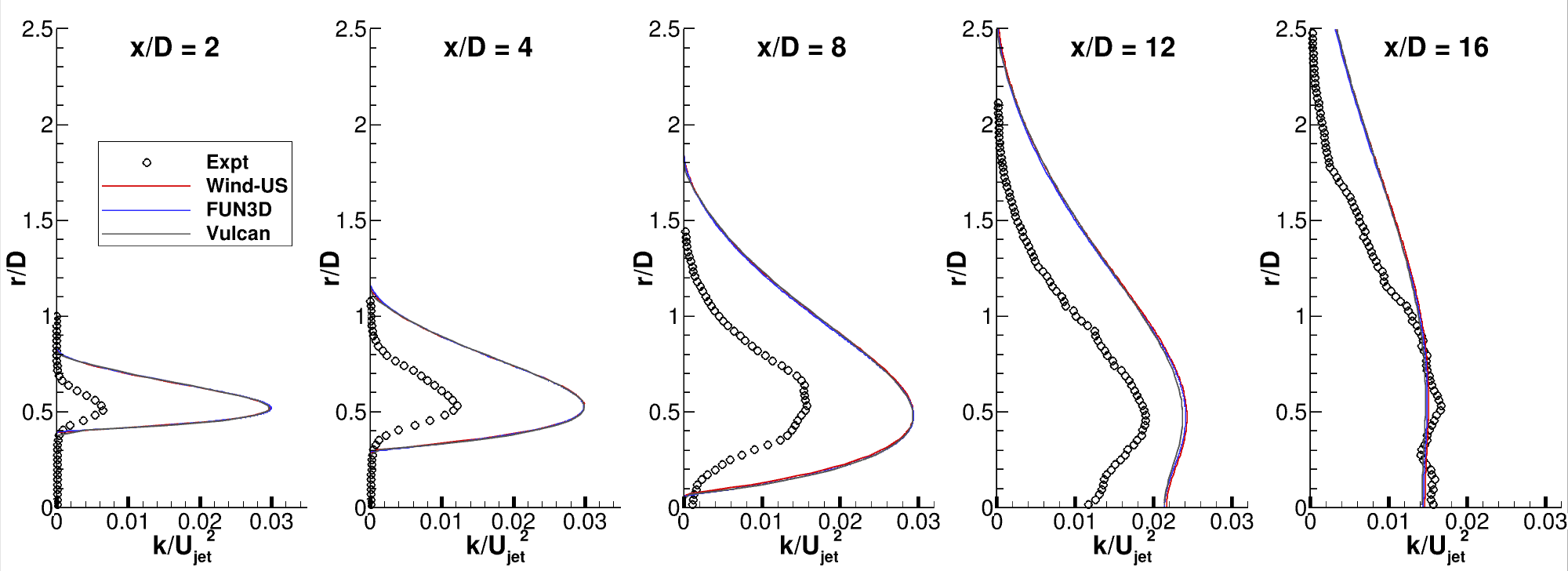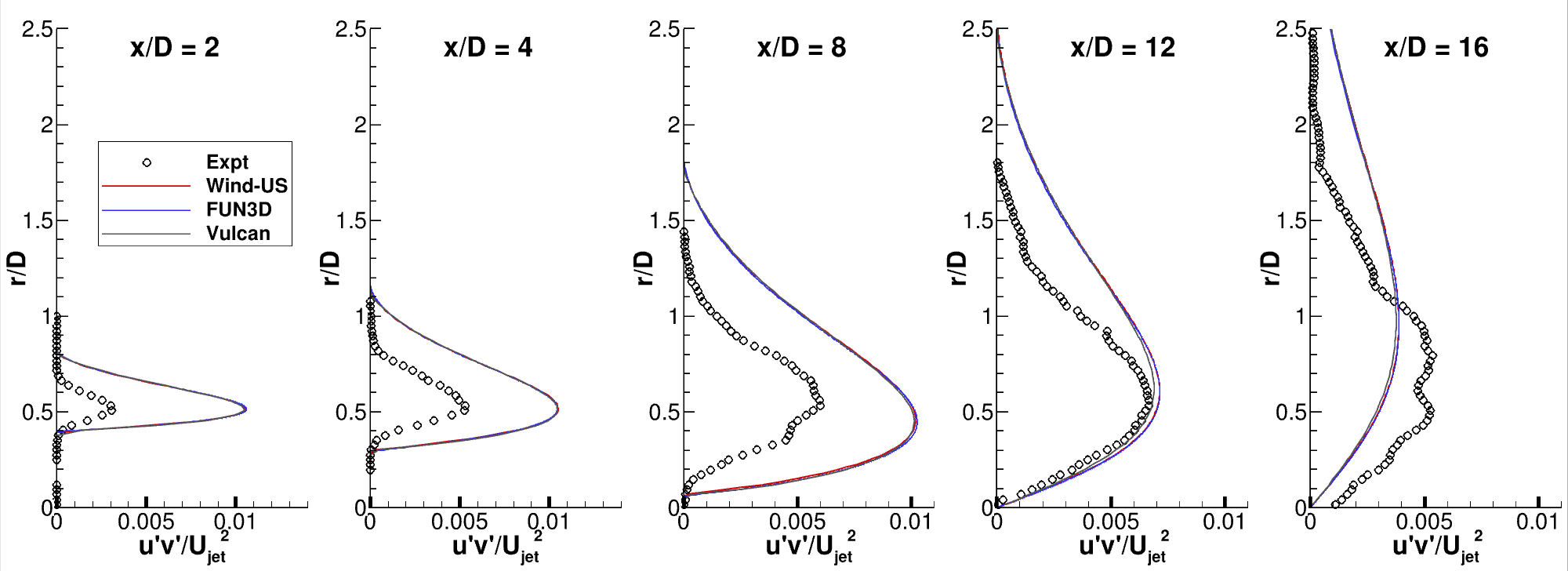 |
Langley Research CenterTurbulence Modeling Resource |
Return to: Temperature-Matched Mach 1.63 Axisymmetric Jet Intro Page
Return to: Turbulence Modeling Resource Home Page
Temperature-Matched Mach 1.63 Axisymmetric Jet Case
SST-Vm Model Results
Link to SST-Vm equations
Note that thorough
grid studies were not always performed for validation cases such as this one.
Some effort was made to ensure reasonable grid resolutions, but there may still be
small noticeable discretization errors. Therefore, these validation results shown should be considered
representative, but not "truth."
The plots shown compare the SST-Vm results from three independent
CFD codes: WIND-US, FUN3D, and Vulcan, along with experimental data.
FUN3D used freestream turbulence intensity=0.775% and freestream turbulent viscosity (relative to laminar)=0.009
(additional details can be found in the CFL3D User's Manual, Appendix H,
which uses the same default freestream turbulence settings).
WIND-US used freestream turbulence intensity=0.1317% and freestream turbulent viscosity (relative to laminar)=0.001.
Vulcan used freestream turbulence intensity=0.1% and freestream turbulent viscosity (relative to laminar)=0.01.
Please read note 5 on Notes on running CFD page.
These results are from the finest posted grid (401x281; 201x161; 961x481).
All three codes gave nearly identical results to each other.
Notes:
(1) For axisymmetric cases such as this (with singular axis of symmetry), it is important to
solve the turbulence dissipation terms in a strong conservation form;
(2) These are compressible code results run on a supersonic case. There may be influence of compressibility.
Although they could be beneficial for this case, no specific turbulence model compressibility corrections have been employed here.
The data files from experiment and all three codes are given here.
For centerline data:
For profile data (here each file contains all results for a particular x/D location):
Return to: Temperature-Matched Mach 1.63 Axisymmetric Jet Intro Page Return to: Turbulence Modeling Resource Home Page
Recent significant updates: Responsible NASA Official:
Ethan Vogel





A typical FUN3D input file is:
fun3d_SSJet_Tmatch.nml.
Page Curator:
Clark Pederson
Last Updated: 08/30/2024